A dozen new drawings of old friends
by Claudia Zeff, Quentin Blake’s Creative Consultant
Claudia Zeff is Quentin Blake's creative consultant and has been working on his dream of a Centre with the word 'Illustration' written above the door since he and a few friends came up with the idea in 2002.
Here Claudia tells us stories behind some of the characters that Quentin has redrawn for a very special fundraising auction at Bonhams, A Dozen New Drawings of Old Friends. Open for bidding until midday 14 March.
Some of the characters in these artworks were first drawn more than 50 years ago. These days Quentin doesn’t use his iconic scratchy pen, ink and watercolours so much but he has picked them up again to create these drawings for us. When I asked Quentin how he found drawing these old friends again he said:
“It was interesting to do; when they appear in books they are almost always doing something. But here they are just sitting for their portraits (apart from Mrs Armitage of course!) and I used the same technique for all of them which wasn’t the case with the originals.”

Quentin sees the page as a theatre stage and often says “When I draw a character I act the part, I think I’ve got to be modest, serious or nervous…you feel it while you’re drawing.”
In this way he breathes life into the characters; they move with the help of that famous broken line and colour wash. Quentin makes them leap off the page. The tone is set by the text whether Quentin or someone else has written it.
In 1968 Quentin invented Patrick, his first solo book. He had illustrated a couple of books by then but only using one or two colours and he needed to convince his publisher that he could work in full colour. So what better way to do this than make up a story about colour.
A young man buys a violin and when he plays it his whole world changes colour, even the smoke from a tramp’s pipe turns into fireworks. This is Quentin at his most magical and lyrical; the colours shine. And it did the trick – Jonathan Cape published it and went on to commission more books.

Created in 1973, Snuff is a story full of gentle humour about a boy trying to learn from his unreliable mentor. And it features the best hats…

Mister Magnolia ‘who only has one boot’ was created in 1980 but today he still manages to dance and juggle. Like him, Mrs Armitage from 1987, finds her own idiosyncratic way of dealing with things.
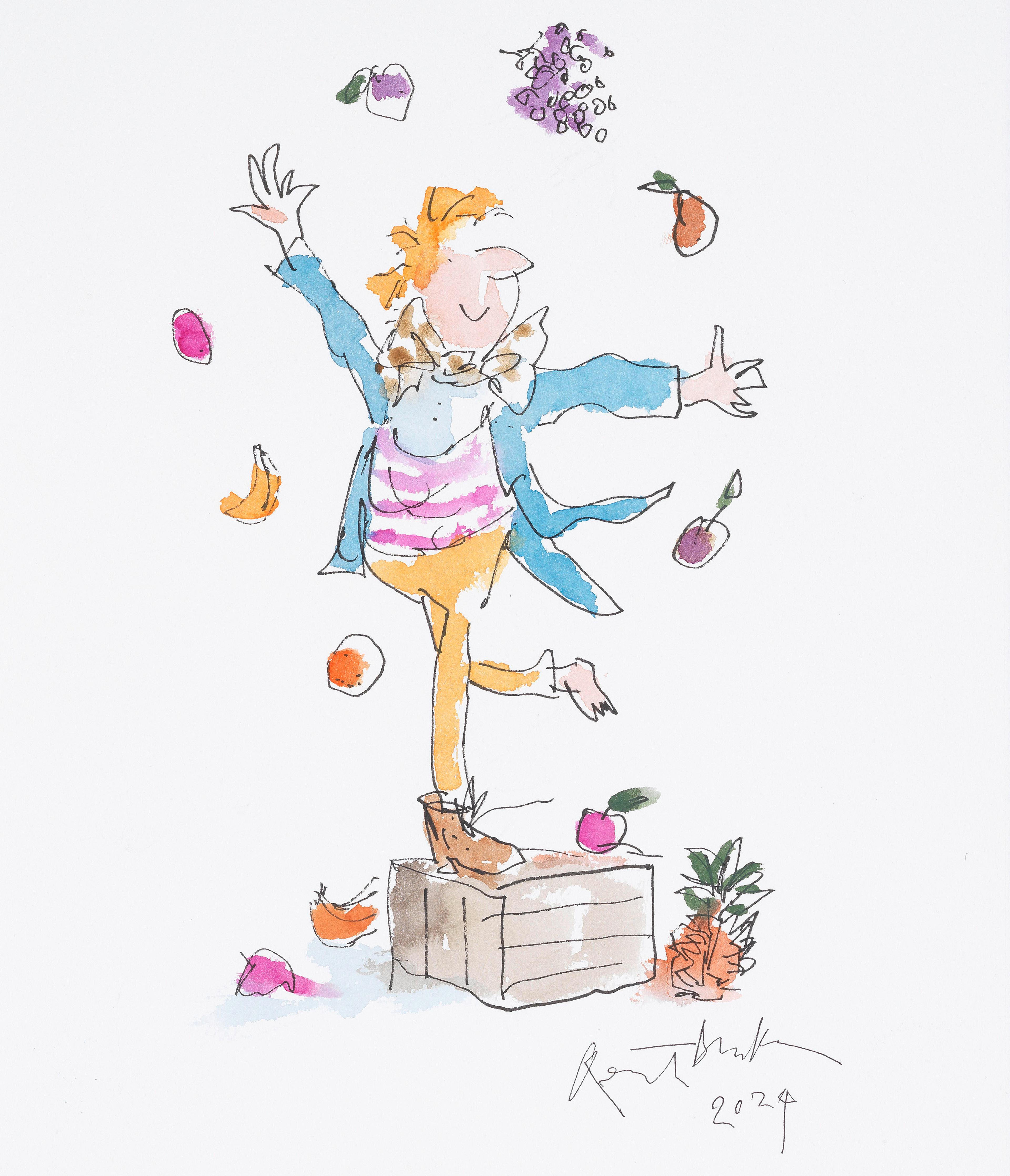

Quentin loves drawing birds; not least because they are two-legged, he can imbue them with human characteristics.
In Cockatoos the gang of birds are the cheekiest and most mischievous who drive Professor Dupont to distraction. Quentin has given much consideration to his use of colours for the cockatoos. They remind me of jockey’s silks.
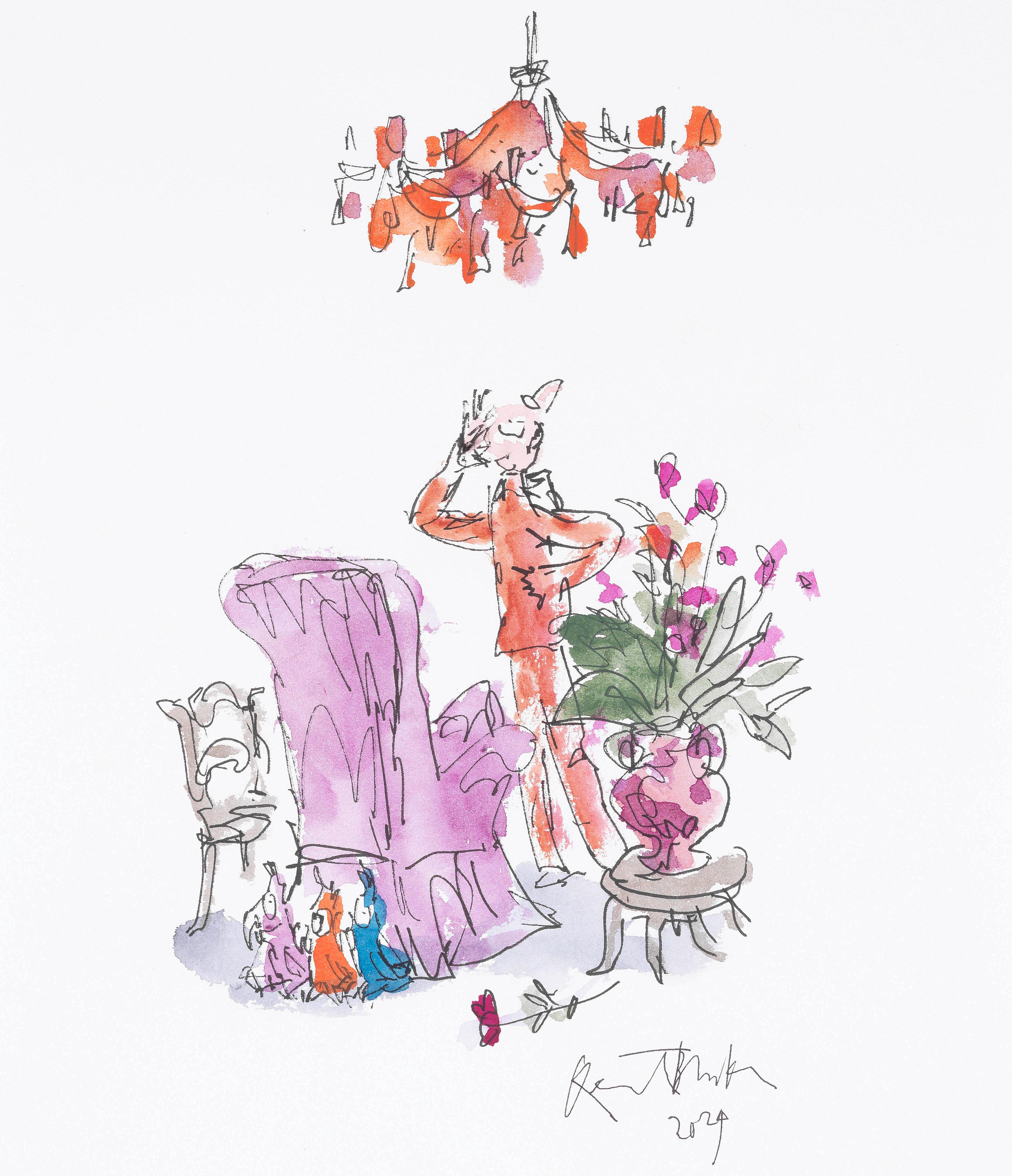
Quentin illustrated his first Roald Dahl book in 1978 and he continued to illustrate his books for the next 40 years, long after Dahl’s lifetime.
They were an odd couple, as Quentin said:
“Roald was a very different person from me, and in a way that was good, because if you’re a double act you don’t want to be two versions of the same person – there’s that contrast, a slight tension almost.”
Quentin described Dahl as “a very tall man who put dreams into children’s heads” rather like The BFG. Dahl’s widow, Liccy, remembers dinners at their house in Great Missenden working on The BFG, Dahl talking about it and Quentin listening with his pad of paper.
You can see in early pen and ink drawing's of the BFG he is wearing a long leather apron which Dahl describes in the original text. But when Quentin drew it he realised there was a problem; it got in the way when the Giant ran and leapt. So Quentin suggested a leather waistcoat instead and Dahl changed the text accordingly.
And then there was his footwear; Dahl had him wearing boots but Quentin thought they looked “dull”. Then one day Quentin received a strange-shaped parcel in the post; it was one of Dahl’s enormous Norwegian leather sandals. Quentin drew them and Dahl adjusted the text. This was a true collaboration and a powerful creative chemistry.
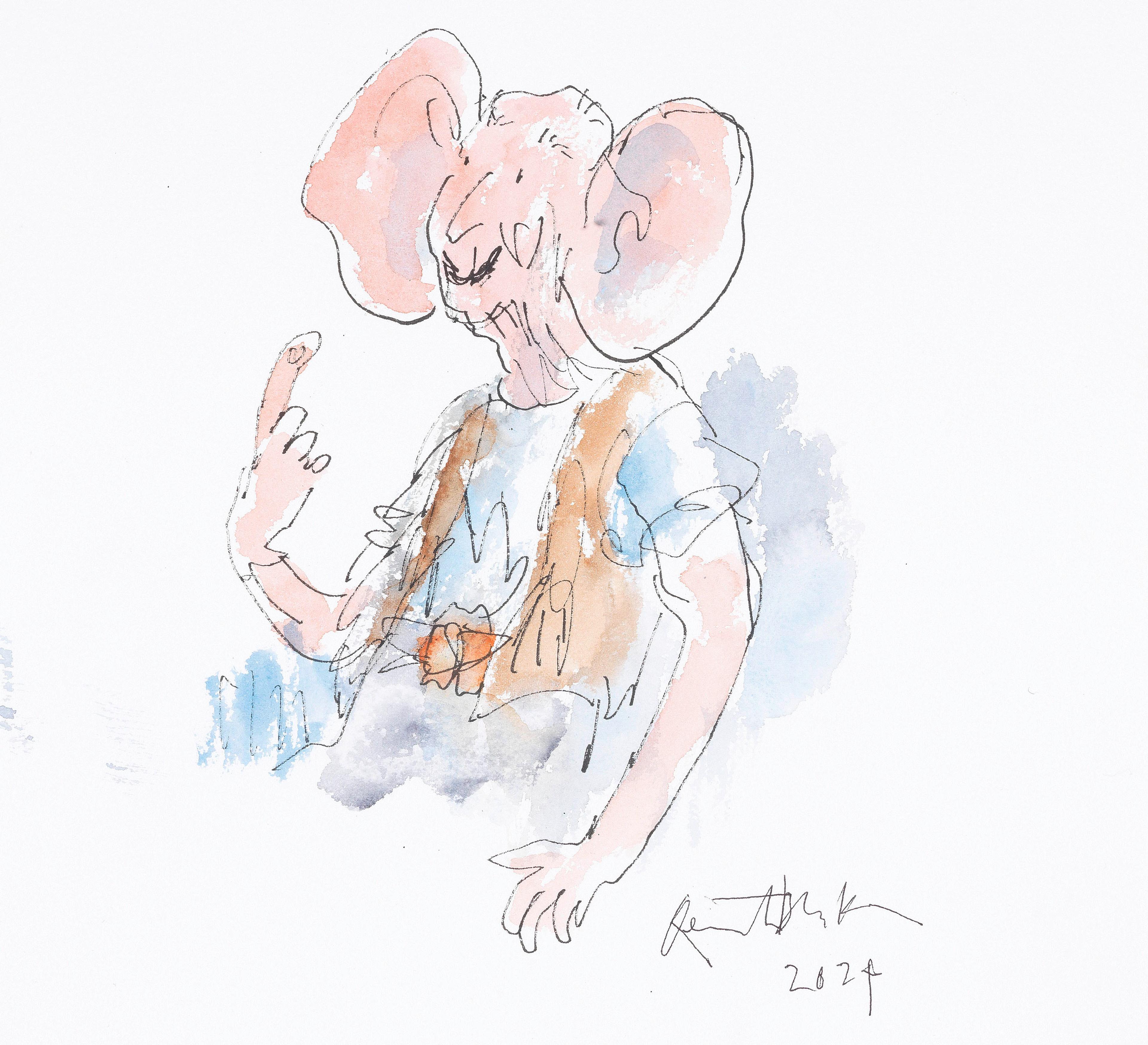
For Matilda, Quentin felt he had to make her very small so that she was dwarfed by the adult characters, but he needed to show her extraordinary intelligence so he gave her the face of an older child. He created roughs where you can see how Quentin worked on her expression.
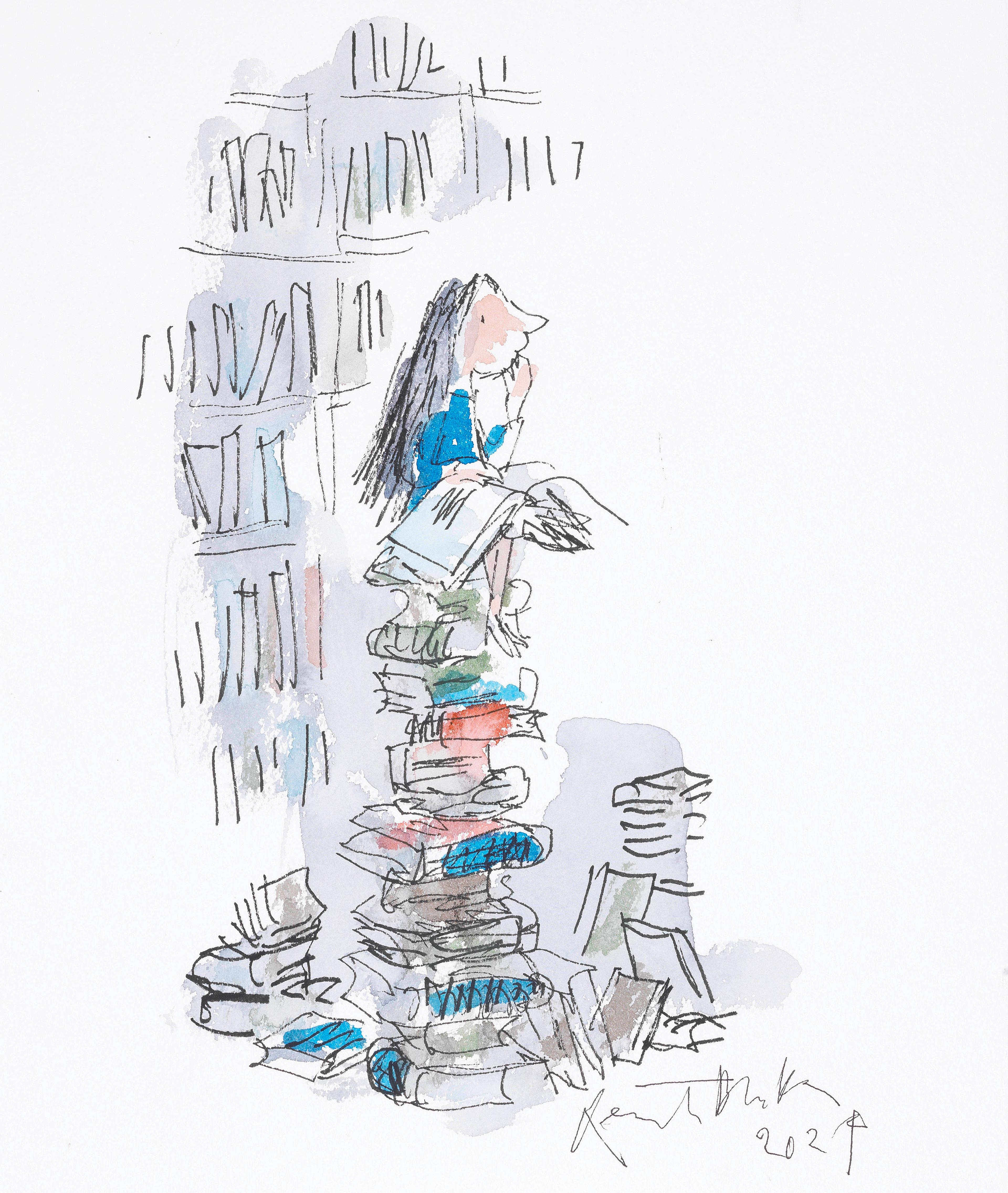
Very often in Dahl’s world there is an intrusive wicked character, like Miss Trunchbull, the terrifying headmistress in Matilda. So by the time Quentin illustrated The Witches he had some experience of drawing evil. The coven of witches are truly monstrous characters. When the Grand High Witch strips off her mask she looks ghastly, with her furious white face and bright pink cheeks and lips.
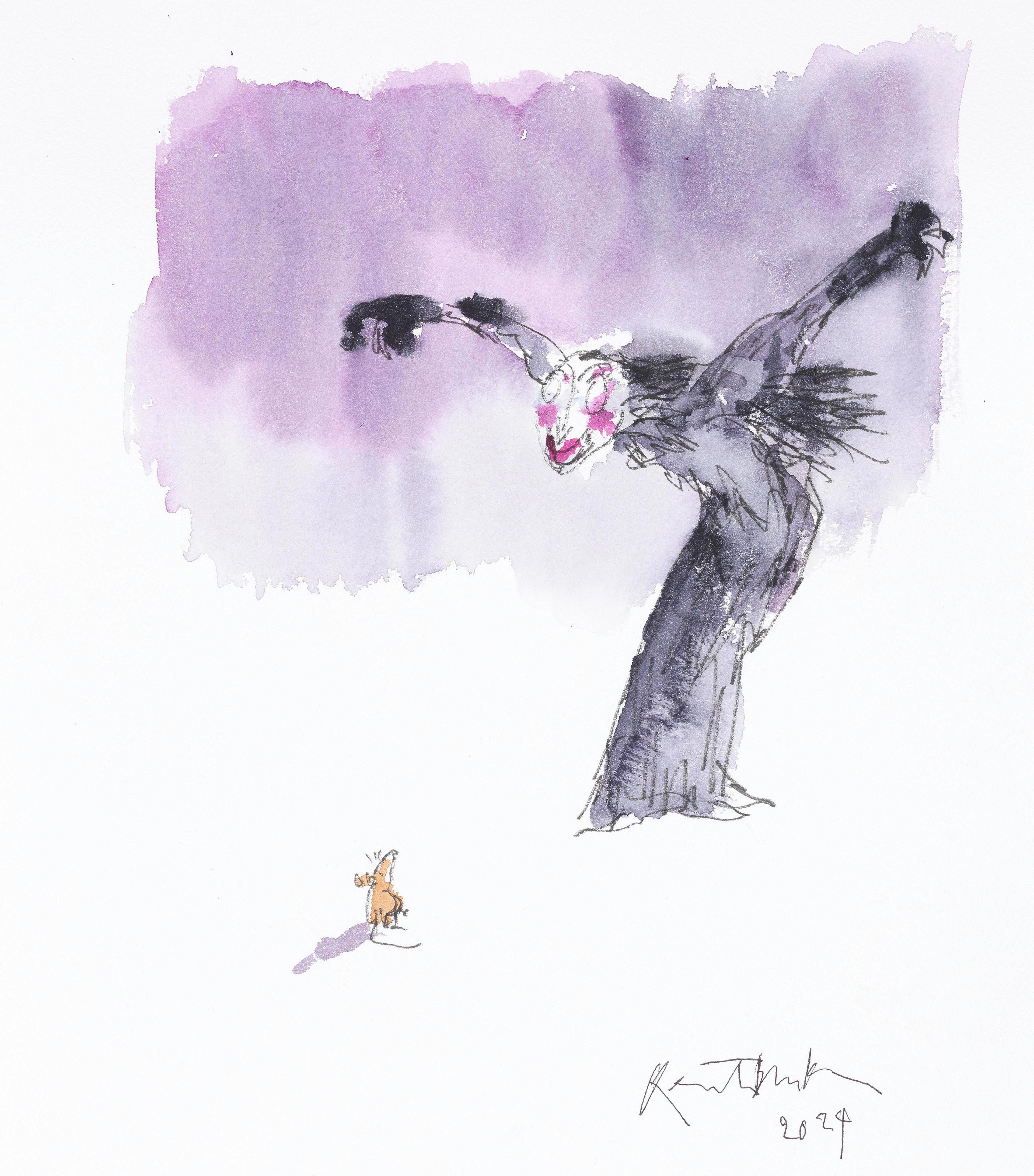
Esio Trot called for a very different palette, more naturalistic for the kindly Mr Hoppy and his tortoises. His balcony crowded with plants and urban landscape outside his flat. It’s a touching story of how Mr Hoppy wins the love of his downstairs neighbour Mrs Silver with an elaborate tortoise trick.

Fantastic Mr Fox is set in the countryside; Quentin uses a similar palette to Esio Trot, apart from Mr Fox’s fabulous clothes of course.
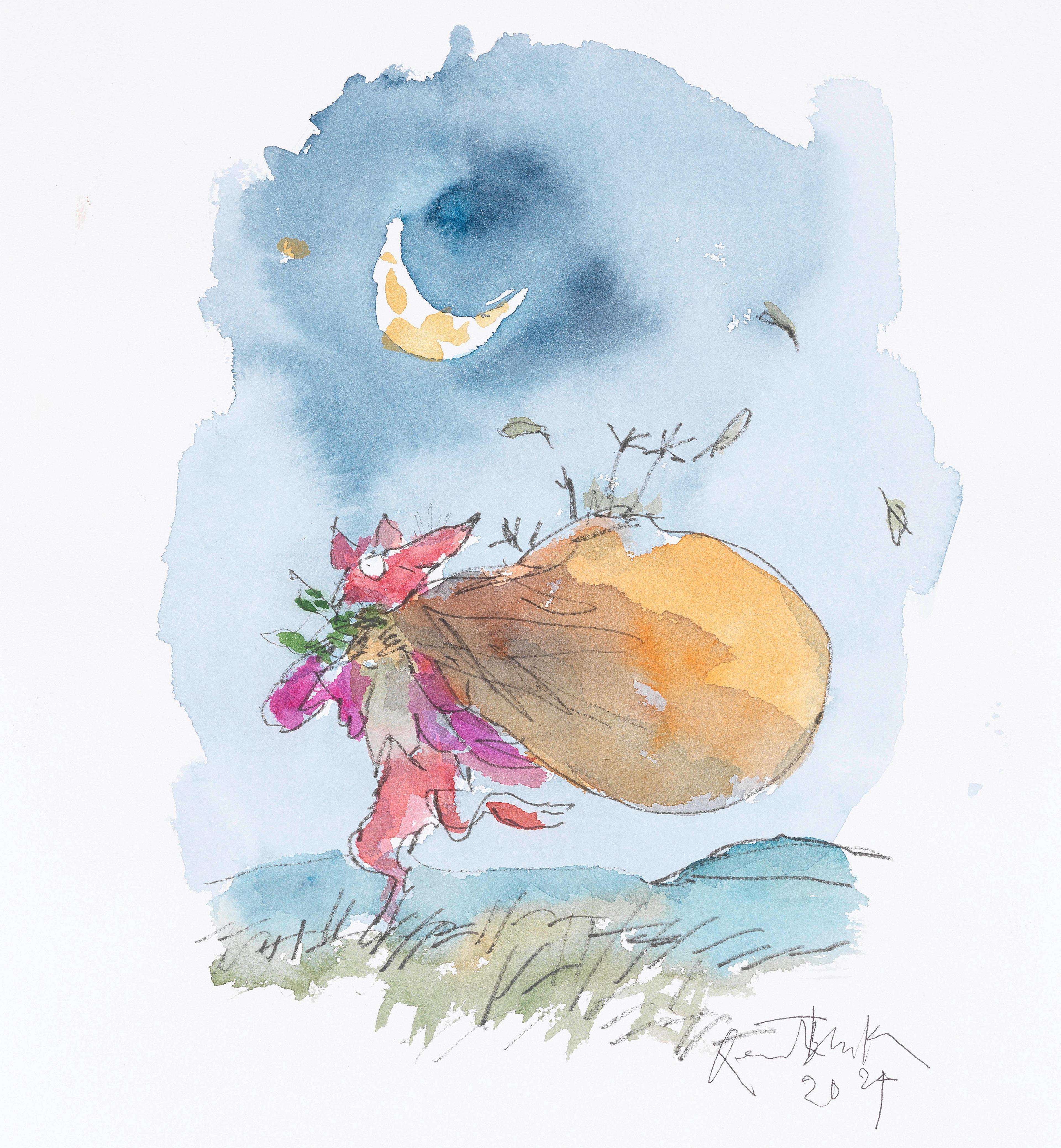
In George’s Marvellous Medicine an eight-year-old decides to make his own toxic potion to deal with his cranky Grandmother (another one of Dahl’s wicked characters). With one of his wild concoctions; in Dahl’s words “For a few brief moments George had touched with his finger-tips the edge of a magic world.” Quentin paints a great, magenta watercolour cloud of smoke – and it’s pure magic…

The auction has now come to an end, view the results online at Bonhams.com.
ImagesCharlie Bucket © The Roald Dahl Story Company, Quentin Blake 2024Patrick © Quentin Blake 2024
Snuff and Sir Thomas Magpie © Quentin Blake 2024
Mister Magnolia © Quentin Blake 2024
Mrs Armitage & Breakspear © Quentin Blake 2024
Professor Dupont © Quentin Blake 2024
The BFG © The Roald Dahl Story Company, Quentin Blake 2024
Matilda © The Roald Dahl Story Company, Quentin Blake 2024
The Grand High Witch © The Roald Dahl Story Company, Quentin Blake 2024
Mr Hoppy © The Roald Dahl Story Company, Quentin Blake 2024
Fantastic Mr Fox © The Roald Dahl Story Company, Quentin Blake 2024
George Kranky © The Roald Dahl Story Company, Quentin Blake 2024